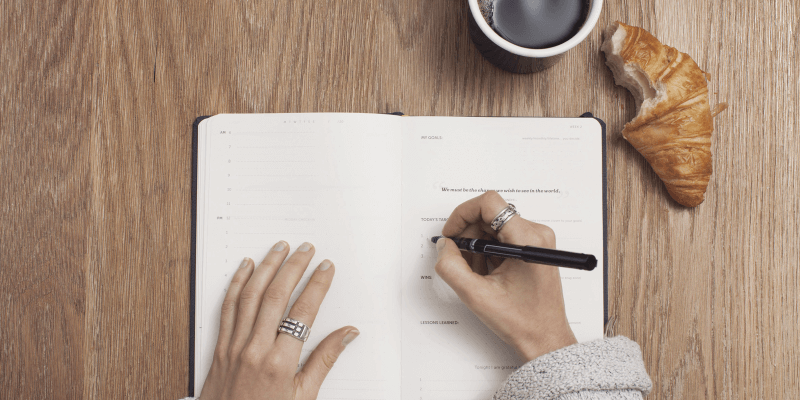
7 Ways Remote Workers Can Construct Their Days for Productivity
Inspired by the habits of some of the greatest intellectuals, scientists, writers, poets, painters, musicians, philosophers, and choreographers of our time, Mason Currey—a Brooklyn, New York-based author—composed a brilliant and captivating account of the daily rituals of these great minds. After reading his book, it became clear to me how much of this information could be useful in helping remote workers construct their days for productivity and enjoyment.
The book, Daily Rituals, includes first- and second-hand accounts from Pablo Picasso, Woody Allen, Wolfgang Amadeus Mozart, Agatha Christie, Maya Angelou, George Balanchine, and dozens of others in an easy-to-read and fascinating manner that opened my mind to the endless possibilities of how we construct our days.
All of the creatives in this book have their own unique ways to achieve maximum productivity, some of them ordinary and some not, and some even allude to a few of the practices that are becoming popular today, such as standing desks and taking long walks.
Drawing from the unique ways in which these artists construct their days, here are seven ideas for how to construct your own day to achieve maximum productivity while working from home:
1. Relish in the unknown.
“What I’ve found with daily routines is that the useful thing is to have one that feels new.” – Nicholson Baker
For novelist Nicholson Baker, adding an element of “newness” is the key to success in finding a daily ritual that works. Baker imposes rules on himself, such as only writing on the back porch, in flip flops, or at a certain hour of the day.
Baker believes the reason this theory works is because of the placebo effect. When we introduce some fresh and out-of-the-ordinary ideas into our routine, the excitement enhances productivity. Baker came up with a new routine for each book that he wrote.
To apply this to your own life, try switching up where you work, such as working outside in the warmer months, or shifting your schedule by an hour or two depending on the season to see if it affects your productivity.
2. Automate your schedule.
Psychologist William James based one of his greatest psychological breakthroughs on the idea of constructing a daily routine. James believed that “the more details of our daily life we can hand over to the effortless custody of automatism, the more our higher powers of the mind will be set free for their own proper work.” James deemed indecisiveness as a substantial block to our creativity and he should know best, being a chronic disorderly and indecisive worker himself.
Regardless of James’s lack of commitment to his own advice, we can learn from his insightfulness about the power of creating a routine to free up space in our minds for our more creative work.
Explore sticking to a well-thought-out routine and see if decreasing the indecisiveness of everyday life—such as when to get up, when to eat breakfast, and when to start working—will allow for more creativity and open space.
3. Seek solitude.
If you’re anything like Igor Stravinsky, you require a quiet and serene place to work in order to feel productive. Stravinsky always started his day with physical exercises of some sort before vigorously working for three hours in the morning.
Unable to work with any distraction, Stravinsky required solitude, saying, “I have never been able to compose unless sure that no one could hear me.” If still affected by a creative block, he went into a brief headstand, claiming that it “rests the head and clears the brain.”
Stravinsky shares with us two valuable pieces of advice for achieving maximum productivity: create a quiet and private space to work in, and if all else fails, go upside down.
4. Find an alternative workspace.
“I try and keep home very pretty, and I can’t work in a pretty surrounding. It throws me.” – Maya Angelou
Maya Angelou was onto something when she decided to only work outside of the home. Longing for a separation between her work and her family life, Angelou would work in a hotel room (if only coworking spaces had existed then!) between the hours of 7:00 a.m. and 2:00 p.m., before heading home to review her work, and then shower and prepare dinner. Angelou enjoyed being able to separate both of her lives and enjoy uninterrupted time with her husband in the evenings.
If you long for a similar work and life separation there are many options for at-home workers, such as working from a coffee shop, the library, or for a more permanent solution, renting out a coworking space.
5. Discover your own set of maxims.
Philosopher Immanuel Kant lived an unusual and isolated life before the age of 40. When a person reached the age of 40, Kant believed, they truly developed a sense of character.
Kant believed that at the center of this character were maxims, or “essential rules for living,” that should be adhered to for the remainder of one’s life. Thus, in the time leading up to his fortieth birthday, Kant indulged himself by staying up late to play cards.
After his birthday, however, he stuck to his routine with an unwavering dedication. He rose at 5:00 a.m., smoked his pipe and drank one or two cups of tea, and wrote and prepared his lectures. From 7:00 a.m. to 11:00 a.m., Kant delivered his lectures, before going to a pub for lunch and socializing with a diverse pool of townspeople. At 3:00 p.m., lunch concluded, and he would take the long walk that he is most known for and visit with close friends. Upon returning home between 7:00 p.m. and 9:00 p.m., Kant would read and do some more work before turning in promptly at 10:00 p.m.
While some are astounded by such a strict routine, Kant found both comfort and success in following such a detailed schedule.
6. Determine your biological clock.
“I really believe in day people and night people.” – Ann Beattie
Beattie strongly believed that there were both day and night people and that people’s bodies operate on different biological clocks. She disregarded any type of formal schedule and wrote best between the hours of midnight and 3:00 a.m. The times that she did try and stick to a schedule to bring her out of a slump only further exacerbated the slump.
Beattie attributed herself to having a permanent case of writer’s block, sometimes not writing anything for months at a time, but learned to deal with it by riding it out and enjoying herself during those lulls.
It’s wise to take the time to consider if you are a night person or a day person, especially when you have the freedom to set your own hours. Question the routines that you adhered to for most of your life, and determine what times of the day are really best for your unique constitution.
7. Take advantage of the benefits of walking.
The benefits of walking are well understood among artists. Pyotr Ilyich Tchaikovsky was one of many artists in this book who attributed his health and creativity to a daily walk. This includes Georgia O’Keeffe, who took a thirty-minute walk each morning, and took a walking stick with her to kill and later save the heads of the many rattlesnakes she encountered.
Tchaikovsky started off his day with a 45-minute walk and interrupted his work with a two-hour walk in the afternoon, claiming that a man needed a two-hour walk each day to sustain his health. He was rather superstitious about this, believing that if he returned just five minutes early, he would “fall ill.” These walks were a main source of inspiration for Tchaikovsky, who often stopped to write down creative ideas that he “would later flesh out at the piano.”
Integrating a daily walk into your work routine can help you fight that creative block that so many of us face in the afternoon, and can also be a great way to start or round out the end of your workday.
These are just a handful of the unique and imaginative productivity tips from some of the world’s greatest artists and thinkers. Examining and being open to altering our daily routines could lead to life-changing rewards for the work-at-home professional by being able to strike a healthy balance between work and a meaningful life.
By Alexis Reale | Categories: Work Remotely



